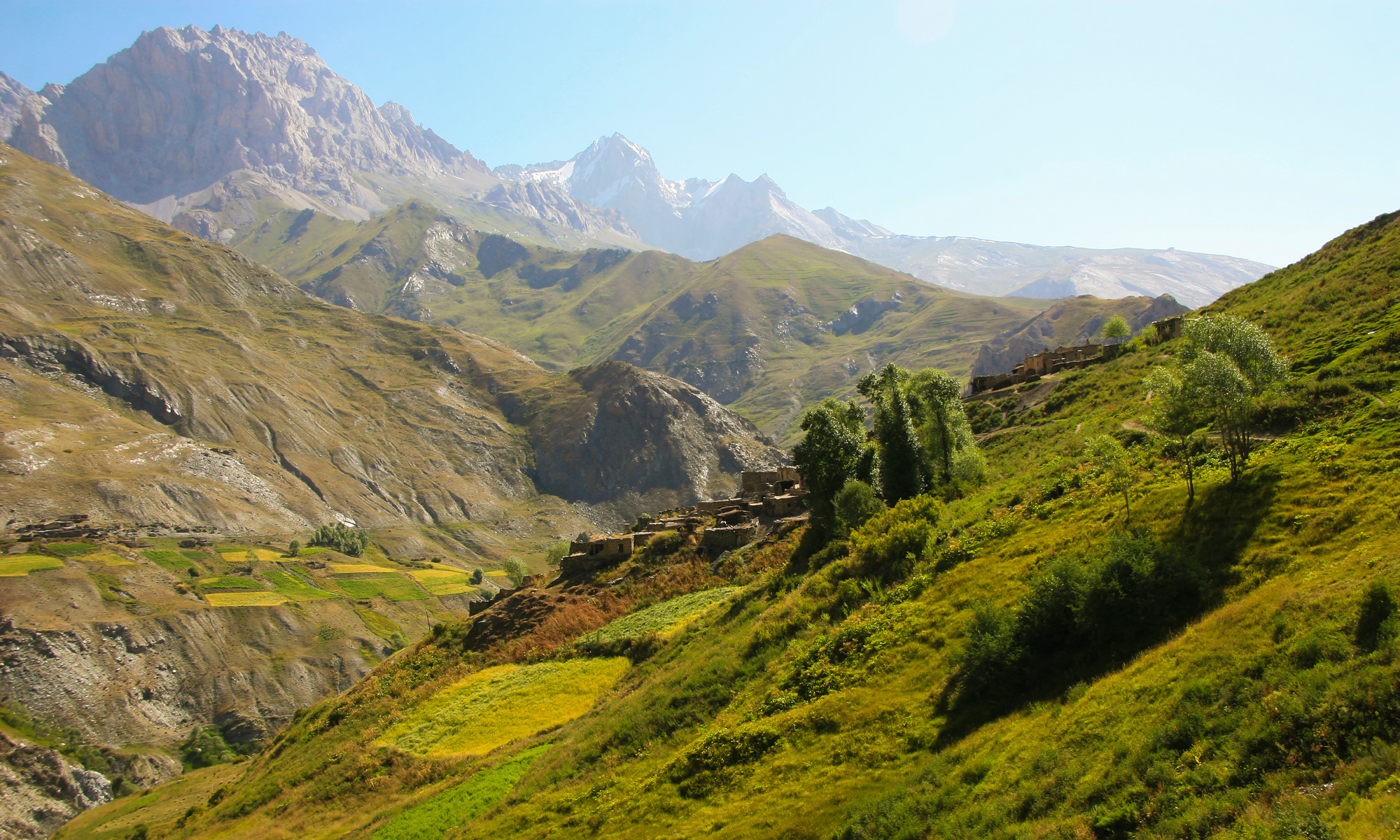In the Yaghnob Valley, the sound of splitting wood signals more than preparation for winter—it signals a dwindling resource, a daily negotiation between survival and scarcity. Where trees are few and winters long, fire is not a comfort—it is a calculation.
For returnee communities living in a fragile alpine ecosystem, fuelwood is both lifeline and liability. With no public energy grid, no official forest oversight, and no replanting schemes, Yaghnobis must navigate a stark landscape where every twig matters, and every fire leaves a mark.
This is not just about warmth. It’s about ecological tension, gendered labor, and the slow-burning cost of being overlooked.
Despite romantic images of wooded Central Asian peaks, the Yaghnob Valley sits above the tree line, between 2,000–3,000 meters. Forests here are not vast or dense—they are fragile clusters of juniper (арча / archa), occasional willow, and scattered birch near water. Shrubs dominate the lower slopes. Timber is a limited, slow-growing resource.
And it is disappearing.
What little wood exists is collected by hand—most often by women and children—from deadfall, sparse groves, or shrubland. There is no formal forestry system, no ranger service, no planting schedule. The forest, such as it is, survives on custom and caution—but even that is fraying.
In the absence of electricity, coal delivery, or piped gas, wood serves multiple roles:
-
Heating through sub-zero winters
-
Cooking daily meals and boiling drinking water
-
Drying food and dairy for storage
-
Maintaining hygiene through warmed water for washing
This is a high-altitude, off-grid existence. And wood is the currency of survival.
Surveys from recent returnee villages show that:
-
Fuelwood gathering can consume 3–6 hours per day in winter months
-
Collection routes lengthen each year as closer sources are depleted
-
Women and girls bear most of this labor, often without gloves or carts
-
Shrubs and root systems are stripped away, leading to erosion and landslide risks
“There were trees once,” one elder says. “Now we warm ourselves with memory.”
Even where care is taken, the consequences of overuse accumulate:
-
Soil erosion on deforested slopes
-
Biodiversity loss, especially of bird and insect habitats
-
Hardening of soils, reducing water absorption and increasing runoff
-
Longer, riskier walks, increasing chances of injury or exposure
There is no forest management plan. There is no state-led replanting, no seedling nursery, no climate adaptation strategy tied to fuelwood access. The pressure is cumulative—and almost entirely silent.
While the proposed Natural-Ethnographic Park could incorporate reforestation and ecosystem protection, it remains unratified. Without it, Yaghnob’s ecology exists in an administrative vacuum.
This leaves returnee families with a cruel paradox:
-
To survive winter, they must burn wood
-
To preserve the valley, they must stop burning it
In the absence of alternatives, necessity wins.
In more accessible Tajik villages, bottled gas or trucked coal serve as winter supplements. In Yaghnob, neither is available.
Some pastoral families use dung cakes, especially in emergency—but stigma, labor demands, and health concerns limit this practice. Solar energy is promising—especially for cooking and lighting—but pilot projects have been few, small, and unsustained.
In short, alternatives remain theoretical, while wood remains essential.
Yet even without state policy, Yaghnobis have long held cultural codes around tree use:
-
Groves near shrines or springs are often protected by taboo
-
Certain trees are seen as watchers—cutting them is believed to bring misfortune
-
Proverbs caution restraint:
“Don’t cut where the birds pray.”
“The tree that burns slow is the one that watched you grow.”
Language reveals an ethic: the forest is not free—it is sacred, symbolic, and slow to forgive.
But moral restraint alone cannot withstand demographic pressure, environmental shift, and infrastructural neglect.
What can be done—realistically—in a high, isolated valley where the state seldom reaches?
Community-led resilience, supported by targeted partnerships, offers some starting points:
Wood Efficiency
-
Distribute improved cookstoves that reduce fuel needs by up to 40%
-
Promote heat-retention cooking methods (e.g., haybox cookers)
Regeneration and Protection
-
Establish community woodlots for rotational harvesting
-
Launch tree nurseries focused on hardy, fast-growing species
-
Protect natural groves through cultural landscape zoning
Energy Diversification
-
Install small-scale solar panels for lighting and water heating in clinics and schools
-
Pilot biogas systems for pastoral families using livestock waste
Policy and Integration
-
Embed forestry and energy planning into the future park’s management
-
Train youth in tree care, erosion prevention, and ecological restoration
None of this can happen in isolation. These efforts must be rooted in local knowledge, supported by external expertise, and backed by sustained funding.
Each bundle of wood carries a story—not only of labor, but of erosion, memory, and fragility. In Yaghnob, burning fuel is not a choice—it is a compromise. Between survival and stewardship. Between the warmth of today and the trees of tomorrow.
To protect this place means more than planting trees. It means hearing the crack of firewood not as a comfort, but as a call—to build systems that honor both the land and the people who depend on it.
